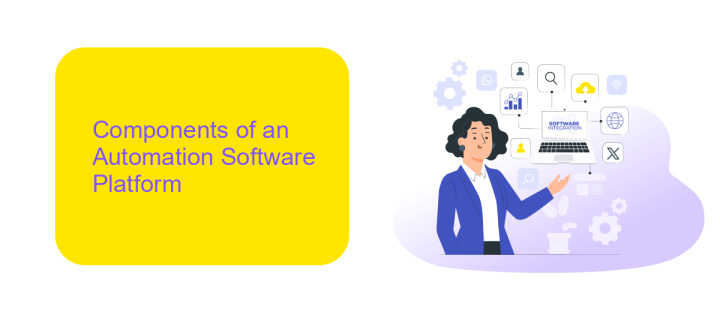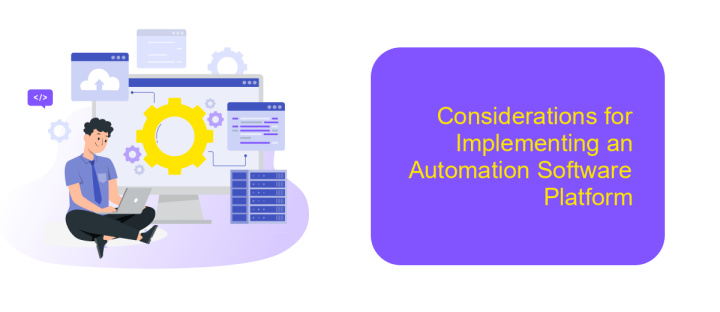Automation Software Platform
Automation software platforms are revolutionizing the way businesses operate by streamlining repetitive tasks, enhancing productivity, and reducing human error. These powerful tools enable organizations to automate workflows, manage complex processes, and integrate various systems seamlessly. As a result, companies can focus more on strategic initiatives, innovation, and delivering exceptional value to their customers.
Introduction to Automation Software Platform
Automation Software Platforms have revolutionized the way businesses operate by streamlining processes and enhancing efficiency. These platforms utilize advanced technologies such as artificial intelligence, machine learning, and robotic process automation to perform repetitive tasks, allowing human workers to focus on more strategic activities. By integrating various software tools and systems, automation platforms enable seamless workflows and data management, leading to improved productivity and reduced operational costs.
- Increased Efficiency: Automation platforms speed up processes by eliminating manual tasks.
- Cost Reduction: Automating tasks reduces the need for extensive human labor, lowering operational expenses.
- Enhanced Accuracy: Automation minimizes the risk of human error, ensuring consistent and precise outcomes.
- Scalability: These platforms can easily scale to meet growing business demands.
- Improved Compliance: Automation helps maintain regulatory compliance by ensuring consistent adherence to standards.
In today's competitive business environment, adopting an automation software platform is no longer a luxury but a necessity. Companies that leverage these technologies gain a significant edge by optimizing their operations and responding more swiftly to market changes. As the landscape continues to evolve, the role of automation platforms will only become more critical in driving business success.
Components of an Automation Software Platform

An automation software platform typically comprises several key components designed to streamline and enhance business processes. One of the fundamental elements is the workflow automation engine, which orchestrates tasks and processes, ensuring that each step is executed in the correct sequence without manual intervention. This engine integrates with various business applications, allowing for seamless data transfer and task automation across different systems. Additionally, user-friendly interfaces and dashboards provide real-time visibility into workflows, enabling users to monitor progress, identify bottlenecks, and make data-driven decisions.
Another critical component is the integration module, which facilitates the connection between disparate systems and applications. Tools like ApiX-Drive play a crucial role here, offering easy-to-use solutions for setting up and managing integrations without requiring extensive technical expertise. This module ensures that data flows smoothly between systems, enhancing overall efficiency and reducing the risk of errors. Furthermore, robust security features, including encryption and access controls, protect sensitive information, ensuring compliance with industry standards and regulations. Together, these components create a cohesive and efficient automation ecosystem that drives productivity and innovation.
Benefits of Using an Automation Software Platform

Implementing an automation software platform can significantly enhance operational efficiency and accuracy across various business processes. By automating repetitive tasks, companies can free up valuable time and resources, allowing employees to focus on more strategic and creative endeavors.
- Increased Productivity: Automation reduces manual intervention, speeding up workflows and increasing overall productivity.
- Cost Savings: By minimizing human errors and optimizing resource allocation, businesses can achieve substantial cost reductions.
- Consistency and Accuracy: Automated processes ensure consistent output, reducing the risk of errors and improving quality control.
- Scalability: Automation platforms can easily scale to accommodate growing business needs without significant additional investment.
- Data-Driven Insights: These platforms often come with analytics tools that provide valuable insights, helping businesses make informed decisions.
Overall, adopting an automation software platform can lead to a more streamlined and efficient operation, ultimately driving business growth and enhancing competitive advantage. By leveraging the power of automation, organizations can stay ahead in an increasingly digital and fast-paced market.
Considerations for Implementing an Automation Software Platform

Implementing an automation software platform can significantly enhance operational efficiency, but it requires careful planning and consideration. Organizations must evaluate their specific needs and objectives to ensure the chosen solution aligns with their business goals.
Before proceeding, it is crucial to assess the current workflow and identify areas that will benefit most from automation. This involves understanding the existing processes, pinpointing bottlenecks, and determining the potential for improvement.
- Evaluate compatibility with existing systems and infrastructure.
- Consider the scalability of the platform for future growth.
- Ensure robust security measures to protect sensitive data.
- Assess the ease of integration with third-party tools and services.
- Analyze the total cost of ownership, including training and maintenance.
Additionally, involving key stakeholders from various departments during the selection process can provide valuable insights and foster a sense of ownership. Thorough training and support are essential to ensure a smooth transition and maximize the benefits of the new automation platform.
Conclusion
In conclusion, the implementation of an automation software platform can significantly enhance operational efficiency and productivity by streamlining repetitive tasks and reducing human error. By leveraging advanced technologies, businesses can achieve greater accuracy and speed in their processes, ultimately leading to improved outcomes and cost savings. The integration of various tools and services, such as ApiX-Drive, further simplifies the automation journey, enabling seamless connectivity between different applications and systems.
As organizations continue to evolve in the digital age, adopting a robust automation software platform becomes increasingly crucial. It not only empowers teams to focus on more strategic initiatives but also provides a scalable solution to meet growing demands. By embracing automation, companies can stay competitive and responsive to market changes, ensuring long-term success and sustainability. Investing in such technologies is a forward-thinking approach that can drive innovation and foster a culture of continuous improvement.
FAQ
What is an automation software platform?
How does an automation software platform integrate different applications?
What are the benefits of using an automation software platform?
Is it difficult to set up and use an automation software platform?
Can an automation software platform be customized to fit specific business needs?
Routine tasks take a lot of time from employees? Do they burn out, do not have enough working day for the main duties and important things? Do you understand that the only way out of this situation in modern realities is automation? Try Apix-Drive for free and make sure that the online connector in 5 minutes of setting up integration will remove a significant part of the routine from your life and free up time for you and your employees.

